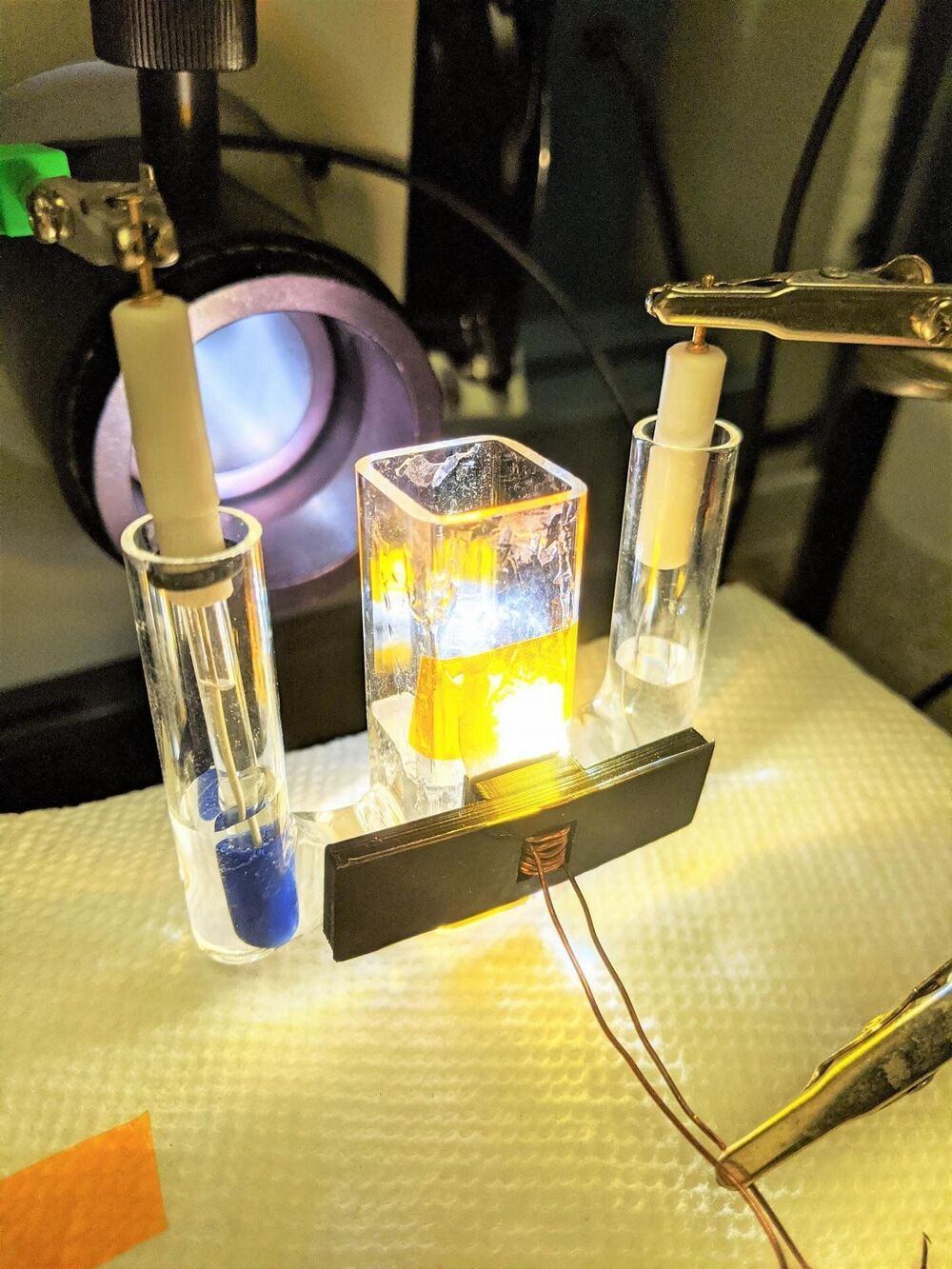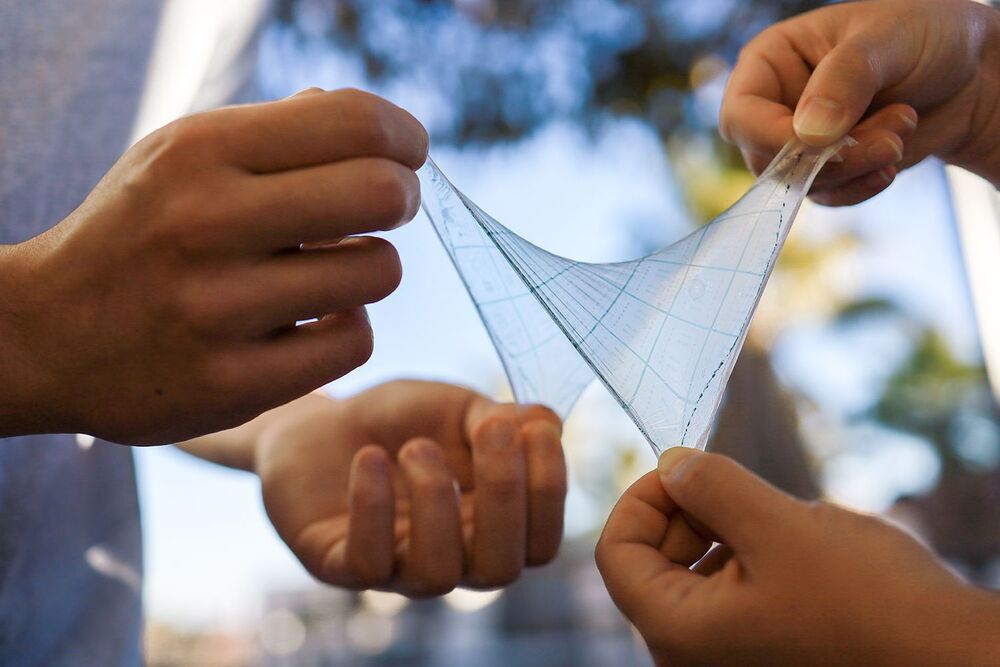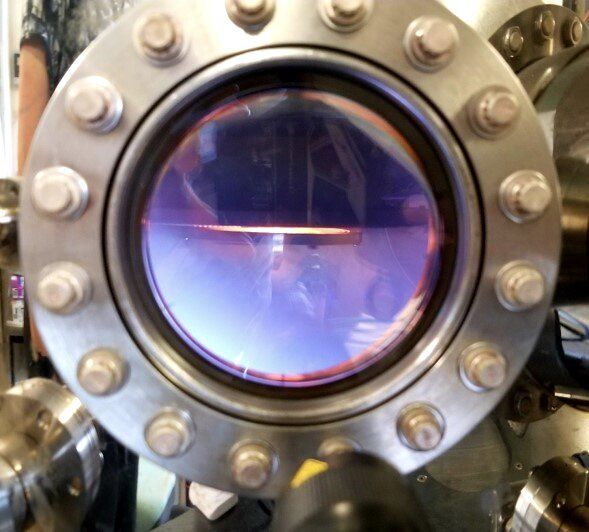The University of Surrey has built an artificial intelligence (AI) model that identifies chemical compounds that promote healthy aging—paving the way towards pharmaceutical innovations that extend a person’s lifespan.



For decades, researchers around the world have searched for ways to use solar power to generate the key reaction for producing hydrogen as a clean energy source—splitting water molecules to form hydrogen and oxygen. However, such efforts have mostly failed because doing it well was too costly, and trying to do it at a low cost led to poor performance.
Now, researchers from The University of Texas at Austin have found a low-cost way to solve one half of the equation, using sunlight to efficiently split off oxygen molecules from water. The finding, published recently in Nature Communications, represents a step forward toward greater adoption of hydrogen as a key part of our energy infrastructure.
As early as the 1970s, researchers were investigating the possibility of using solar energy to generate hydrogen. But the inability to find materials with the combination of properties needed for a device that can perform the key chemical reactions efficiently has kept it from becoming a mainstream method.

The findings, published in Nature Communications, could have important implications for human health: minis have been found at every type of synapse studied so far, and defects in miniature neurotransmission have been linked to range of neurodevelopmental disorders in children. Figuring out how a reduction in miniature neurotransmission changes the structure of synapses, and how that in turn affects behavior, could help to better understand neurodegenerative disorders and other brain conditions.
Summary: Study reveals how miniature release events help to keep neurons intact and preserve motor neuron function in aging insects.
Source: EPFL
Neurons communicate through rapid electrical signals that regulate the release of neurotransmitters, the brain’s chemical messengers. Once transmitted across a neuron, electrical signals cause the juncture with another neuron, known as a synapse, to release droplets filled with neurotransmitters that pass the information on to the next neuron. This type of neuron-to-neuron communication is known as evoked neurotransmission.
However, some neurotransmitter-packed droplets are released at the synapse even in the absence of electrical impulses. These miniature release events — or minis — have long been regarded as ‘background noise’, says Brian McCabe, Director of the Laboratory of Neural Genetics and Disease and a Professor in the EPFL Brain Mind Institute.

Summary: Newly synthesized compounds can halt the degradation of neurons in a range of neurodegenerative diseases, including Alzheimer’s and Parkinson’s disease, researchers say.
Source: Ural Federal University
Russian scientists have synthesized chemical compounds that can stop the degeneration of neurons in Alzheimer’s, Parkinson’s, and other severe brain pathologies. These substances can provide a breakthrough in the treatment of neurodegenerative pathologies.
New molecules of pyrrolyl-and indolylazine classes activate intracellular mechanisms to combat one of the main causes of “aged” brain diseases – an excess of so-called amyloid structures that accumulate in the human brain with age.

Chemical engineer Zhenan Bao and her team of researchers at Stanford have spent nearly two decades trying to develop skin-like integrated circuits that can be stretched, folded, bent and twisted — working all the while — and then snap back without fail, every time. Such circuits presage a day of wearable and implantable products, but one hurdle has always stood in the way.
Namely, “How does one produce a completely new technology in quantities great enough to make commercialization possible?” Bao said. Bao and team think they have a solution. In a new study, the group describes how they have printed stretchable-yet-durable integrated circuits on rubbery, skin-like materials, using the same equipment designed to make solid silicon chips — an accomplishment that could ease the transition to commercialization by switching foundries that today make rigid circuits to producing stretchable ones.
Stanford researchers show how to print dense transistor arrays on skin-like materials to create stretchable circuits that flex with the body to perform applications yet to be imagined.

The oil industry, pharmaceutical companies and bioreactor manufacturers all face one common enemy: bubbles. Bubbles can form during the manufacturing or transport of various liquids, and their formation and rupture can cause significant issues in product quality.
Inspired by these issues and the puzzling physics behind bubbles, an international scientific collaboration was born. Stanford University chemical engineer Gerald Fuller along with his Ph.D. students Aadithya Kannan and Vinny Chandran Suja, as well as visiting Ph.D. student Daniele Tammaro from the University of Naples, teamed up to study how different kinds of bubbles pop.
The researchers were particularly interested in bubbles with proteins embedded on their surfaces, which is a common occurrence in the pharmaceutical industry and in bioreactors used for cell culture. In an unanticipated result, the researchers discovered that the protein bubbles they were studying opened up like flowers when popped with a needle. Their findings are detailed in a study published in the journal of the Proceedings of the National Academy of Sciences on July 19.

A team led by a researcher from the University of Sydney has developed a low-cost, sustainable, and readily available technology that can dim the screens of electronic devices, anti-reflection automobile mirrors, and smart architectural windows at a fraction of the cost of current technology.
It would replace one of the world’s scarcest—yet highly ubiquitous in use—modern materials: indium. A rare chemical element, that it is widely used in devices such as smartphones and computers, windscreen glass and self-dimming windows.
Although small amounts are used to manufacture smart device screens, indium is expensive as it is hard to source; it naturally occurs only in small deposits. Industrial indium is often made as a byproduct of zinc mining, which means a shortage could occur if demand for optoelectronic devices—such as LCDs and touch panels—ramps up.

CHINA’S NEW THORIUM-BASED NUCLEAR REACTOR is well situated for being adopted for Space applications.
China is slowly but steadily positioning itself to leap ahead of the US Space program. It is doing this without pomp and fanfare, and without the idea of a “space race,” simply based upon what it requires for its future.
1) Recent noteworthy progress on molten salt thorium reactors could be a key component of future Chinese space-worthiness. Originally designed by the USA’s Oak Ridge National Laboratory in the 1960’s, they were planned to be used for nuclear powered strategic bomber planes, before the nuclear submarine concept became adopted as more feasible. They were chosen because they can be miniaturized to the size of an aircraft. By the same token, they could conceivably be used in advanced atmospheric or space propulsion.
2) Recently, China announced successful tests on a new type of aircraft that takes in air from the surrounding atmosphere, ionizes it with electricity, and expels it as exhaust. The only thing needed would be a strong enough on-board electrical supply to supply the huge amount of power required. Only a nuclear power plant could supply that power unless it were to be beamed from ground stations. Such a plane would require no fuel for its entire lifetime. It could also function in any atmosphere, not only Earth’s atmosphere, since it is not based on burning fuel chemically, which requires oxygen. Versions of such air-plasma-breathing thrust could be used as part of the boosting phase of a rocket launch system.
3) A few days ago, China tested part of its fully reusable space plane, which is a vastly superior system to SpaceX’s “Starship” rocket. While Starship uses old-fashioned ballistic rocket technology, the Chinese spaceplane, according to reports that have come out, involves something similar to the Sanger space plane design. An early version of the Space Shuttle design also had this configuration. Instead of the Space Shuttle’s dangerous solid rocket boosters on the side, and its external fuel tank, which is dumped once the fuel is used up, such systems have a second “booster aircraft” which glides to a runway after boosting the upper stage orbiter into its atmospheric launch position. So, there are two vehicles which land on a runway, with only the orbiter going into space. In addition to this, the Chinese are adding “combined cycle” technologies, where more than one type of propulsion is being used on the aircraft. So, perhaps turbojets, and scramjets, and rocket engines will be used as one example of such a configuration.
The new molten salt reactors, part of a program developed under the leadership of former Chinese President Zemin’s son, and with collaboration from the US’s Oakridge National Laboratory, is now close to implementation stage. Such reactors could be integrated into a space plane, allowing “single-stage-to-orbit” concepts to become within reach. Such systems would not need a booster phase, but would use a combination of air-plasma-breathing and rocket engines to get to orbit with only a single vehicle, while landing like the Space Shuttle did or perhaps landing with powered flight instead of gliding without fuel as did the Shuttle.
All of this makes China’s plan for “nuclear-powered space shuttles” in the 2040’s very possible. If fusion power is obtained before then, this will all proceed even faster, and all the technical and engineering skills will be immediately brought to bear.
The thorium-powered reactors do not need water as a coolant, meaning they can be built in remote deserts alongside wind and solar power plants.

Nick Saraev is 25 years old, far too young, it would seem, to be thinking about death. And yet, since he turned 21, he has taken steps to prevent the infirmities of old age. Every day, he takes 2000 mg of fish oil and 4000 IU of vitamin D to help prevent heart disease and other ailments. He steams or pressure-cooks most of his meals because, he says, charring meats creates chemicals that may increase the risk of cancer. And in the winter, he keeps the humidity of his home at 35 percent, because dry air chaps his skin and makes him cough, both of which he considers manifestations of chronic inflammation, which may be bad for longevity.
Based on the life expectancies of young men in North America, Saraev, a freelance software engineer based near Vancouver, believes he has about 55 years before he really has to think about aging. Given the exponential advances in microprocessors and smartphones in his lifetime, he insists the biotech industry will figure out a solution by then. For this reason, Saraev, like any number of young, optimistic, tech-associated men, believes that if he takes the correct preventative steps now, he might well live forever. Saraev’s plan is to keep his body in good enough shape to hit “Longevity Escape Velocity,” a term coined by English gerontologist Aubrey de Grey to denote slowing down your aging enough to reach each new medical advance as it arrives. If you delay your death by 10 years, for example, that’s 10 more years scientists have to come up with a drug, computer program, or robot assist that can make you live even longer. Keep up this game of reverse leapfrog, and eventually death can’t catch you. The term is reminiscent of “planetary escape velocity,” the speed an object needs to move in order to break free of gravity.
The science required to break free of death, unfortunately, is still at ground level. According to Nir Barzilai, M.D., director of the Institute for Aging Research at Albert Einstein College of Medicine in New York City, scientists currently understand aging as a function of seven to nine biological hallmarks, factors that change as we grow older and seem to have an anti-aging effect when reversed. You can imagine these as knobs you can turn up or down to increase or decrease the likelihood of illness and frailty. Some of these you may have heard of, including how well cells remove waste, called proteostasis; how well cells create energy, or mitochondrial function; how well cells implement their genetic instructions, or epigenetics; and how well cells maintain their DNA’s integrity, called DNA repair or telomere erosion.

A new way of producing coherent light in the ultra-violet spectral region, which points the way to developing brilliant table-top x-ray sources, has been produced in research led at the University of Strathclyde.
The scientists have developed a type of ultra-short wavelength coherent light source that does not require laser action to produce coherence. Common electron-beam based light sources, known as fourth-generation light sources, are based on the free-electron laser (FEL), which uses an undulator to convert electron beam energy into X-rays.
Coherent light sources are powerful tools that enable research in many areas of medicine, biology, material sciences, chemistry, and physics.